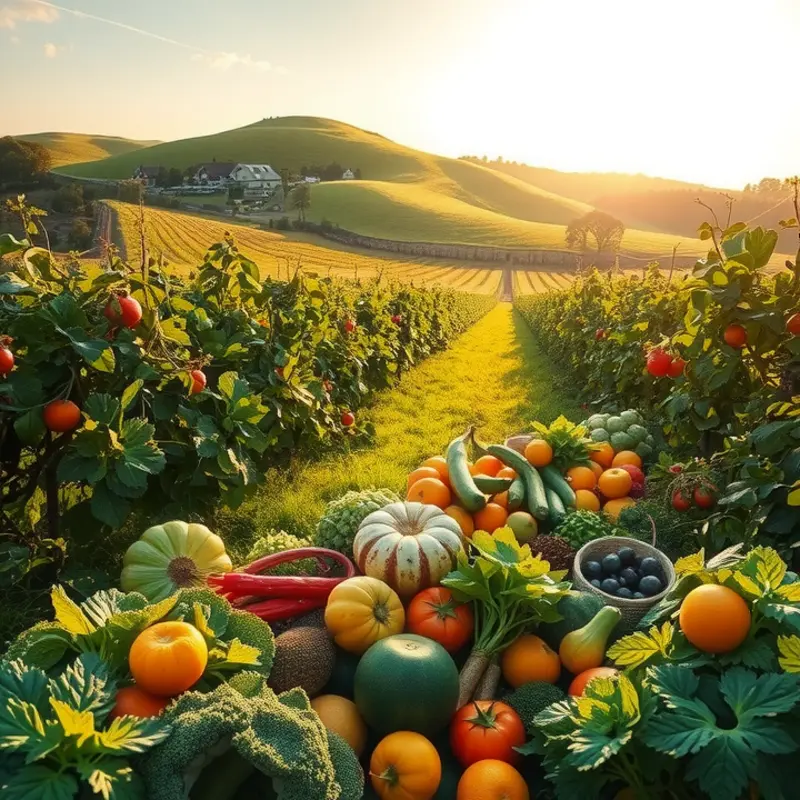Food is not just fuel; it serves as a medium through which we can find peace, embrace joy, and build mindful eating habits. Delving into food-based relaxation allows us to connect with our senses and emotions, cultivating deeper awareness of our eating experiences. It opens a door to understanding how our food choices impact our emotional health, making each meal an opportunity for nourishment in more ways than one.
The Emotional Palette: Colors of Food and Feelings

The color of food is more than just an aesthetic choice or a culinary accident. Each vibrant hue can evoke unique emotions and influence our mental state. Engaging with these colors mindfully can enrich your eating experience, fostering relaxation and joy.
Reds: Red foods, such as tomatoes and strawberries, are known for invoking passion, warmth, and energy. Incorporating red foods into your meals might invigorate you, adding a spark of excitement or combatting feelings of lethargy. However, balance is key. Too much red can be overwhelming, as it is a highly stimulating color.
Greens: Green is the color of nature and growth. Vegetables like spinach and broccoli evoke a sense of tranquility and balance. These foods can ground you, assisting in stress relief and promoting relaxation. For those particularly tense days, a green salad might help calm and stabilize your mood, providing both nutritional and emotional benefits.
Yellows and Oranges: Foods like carrots, corn, and citrus fruits embody cheerfulness and warmth. The vibrant energy of these colors often brings a sense of joy and happiness. Imagine the optimism of a bright yellow lemon or the warmth of a ripe orange; incorporating these colors into your diet can uplift your mood, brightening not just your plate, but your outlook as well.
Blues and Purples: Blueberries and eggplants offer a soothing, calming effect. These shades are often linked to creativity and introspection. They offer a comforting, quiet presence, aiding in relaxation and self-reflection. Integrating these colors can help in winding down after a long day or inspire creativity during solitary moments.
Whites and Browns: Neutral colors like those of potatoes, white beans, and nuts might foster feelings of peace and comfort. These foods often evoke nostalgia and warmth, providing an emotional anchor. They can be the perfect companion when you need grounding and stability.
By mindfully selecting the colors on your plate, meals become an intentional activity rather than a basic necessity. You can curate your emotional landscape by choosing specific hues, much like an artist selecting colors for a canvas.
For those interested in understanding more about the psychological aspects of food and how it influences our subconscious decisions, explore more about unconscious eating habits. By developing an awareness of the emotional impact of food colors and engaging actively with meal choices, you enhance both your mental well-being and culinary experience.
Creating a Mindful Eating Ritual

Embracing the practice of mindful eating can transform the simple act of eating into a form of meditation. This approach invites you to be present and engage all your senses, ultimately cultivating a deeper relationship with food. Here are some practical steps you can employ to create a calming eating environment that encourages relaxation and heightened emotional awareness.
First, choose a dedicated space for your meals. This doesn’t need to be an ornate setup; even a small table can become your haven of tranquility. Ensure that this space is clean and free of clutter. Less visual distraction aids in focusing your attention on the meal in front of you.
Before you begin eating, take a moment to pause and breathe deeply. This simple act of grounding can ease your mind into a state of readiness to receive nourishment. As you breathe, consider expressing gratitude for the food you are about to enjoy, acknowledging the journey it has taken to reach your plate.
Next, engage all of your senses as you prepare to eat. Observe the vivid colors of your meal, inhale deeply to experience its aroma, and listen to the subtle sounds it makes as you cut or serve it. These sensory observations not only enhance your appreciation of the food but also anchor you in the present moment.
When you take your first bite, chew slowly and deliberately. Focus on the texture and flavor unfolding in your mouth. This act of savoring each bite can transform the meal into a series of pleasant discoveries. It also encourages your body’s natural digestive processes to function more efficiently.
During the meal, periodically check in with yourself. How do the flavors evolve? Are you starting to feel full? This practice develops your intuitive eating skills and aids in recognizing not only physical but also emotional hunger cues.
Minimize potential disruptions by silencing your phone and turning off the television. Background noise can detract from your focus and diminish the mindful experience. Instead, consider playing soft, instrumental music if silence feels uncomfortable.
The act of eating mindfully is also an opportunity to reflect on your emotional state. Notice if certain emotions arise in response to specific foods or textures. Identifying these emotional connections can lead to new insights about your eating habits. If you’re interested in exploring more about how emotions impact eating, the article Addressing Unconscious Eating offers further exploration into this topic.
By integrating these mindful eating practices into your routine, you cultivate a sense of calm and awareness. This ritual not only nourishes your body but also soothes your mind, creating a harmonious experience that enriches your emotional well-being.
Final words
Engaging with food through a lens of relaxation and mindfulness can significantly impact emotional health. By embracing the colors and textures of our meals, we open ourselves to a world where food is not just sustenance but also a source of joy and comfort. Creating mindful eating rituals allows us to relish the flavors of life, promoting tranquility and well-being. As you embark on this journey, remember that nourishing your emotional health through food can be both a beautiful art and a simple practice.







